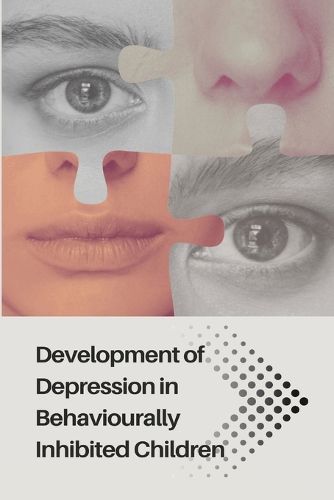Development of Depression in Behaviourally Inhibited Children
Ron Paulie

Development of Depression in Behaviourally Inhibited Children
Ron Paulie
This title is printed to order. This book may have been self-published. If so, we cannot guarantee the quality of the content. In the main most books will have gone through the editing process however some may not. We therefore suggest that you be aware of this before ordering this book. If in doubt check either the author or publisher’s details as we are unable to accept any returns unless they are faulty. Please contact us if you have any questions.
Although depression rates increase rapidly in adolescence, the mechanisms behind
this development are not fully understood. This Book examined the role of several risk
factors for adolescent depression with a focus on risk-taking, reward-seeking, early
childhood temperament and social interactions. Two samples were used across four
empirical papers. First, a sample of behaviourally inhibited (BI) and uninhibited (BUI)
preschool children (n = 70). Second, a sample of adolescents initially recruited and
classified at BI and BUI at age 4. Paper 1 examined how the temperamental constructs of
BI and effortful control related to risk-taking. Effortful control, but not BI, at age 4 was
related to reward focused risk-taking on the Balloon Analogue Risk Task (BART). Paper 2
examined the association between BI in childhood, risk-taking and depressive symptoms in
adolescence, including how risk-taking as measured by the BART may present a potential
risk pathway. An interaction between BI and risk-taking was associated with depressive
symptoms in early adolescence. Due to the salience of peers in adolescence and the role
that peer interactions might play in risk for adolescent depression, Paper 3 further explored
risk-taking by developing a novel measure of social risk-taking and examining the
association between scores on this measure and depressive symptoms over a 6-month
period. A bidirectional relationship between social risk-taking and depressive symptoms
was found. In addition, social acceptance partially mediated the relationship between
depressive symptoms and social risk-taking. Finally, Paper 4 focused on reward-seeking
using an adapted effort-reward task. No overall difference was found between early
adolescents with or without symptoms of depression in their motivation to view a
rewarding cartoon. Nevertheless, the task shows promise for future work in this area.
Taken together, the results of this Book present unique information about adolescent
depression and the risk factors of temperament, risk-taking, reward-seeking and social risktaking.
This item is not currently in-stock. It can be ordered online and is expected to ship in 7-14 days
Our stock data is updated periodically, and availability may change throughout the day for in-demand items. Please call the relevant shop for the most current stock information. Prices are subject to change without notice.
Sign in or become a Readings Member to add this title to a wishlist.


